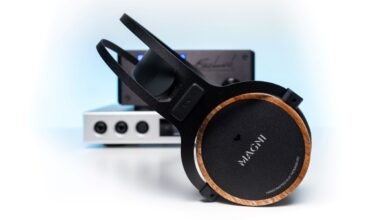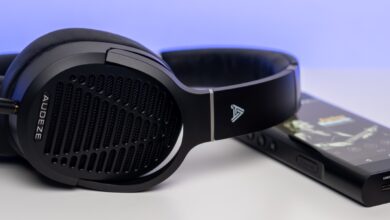Audeze LCD-4 Review – Emotional Triggers
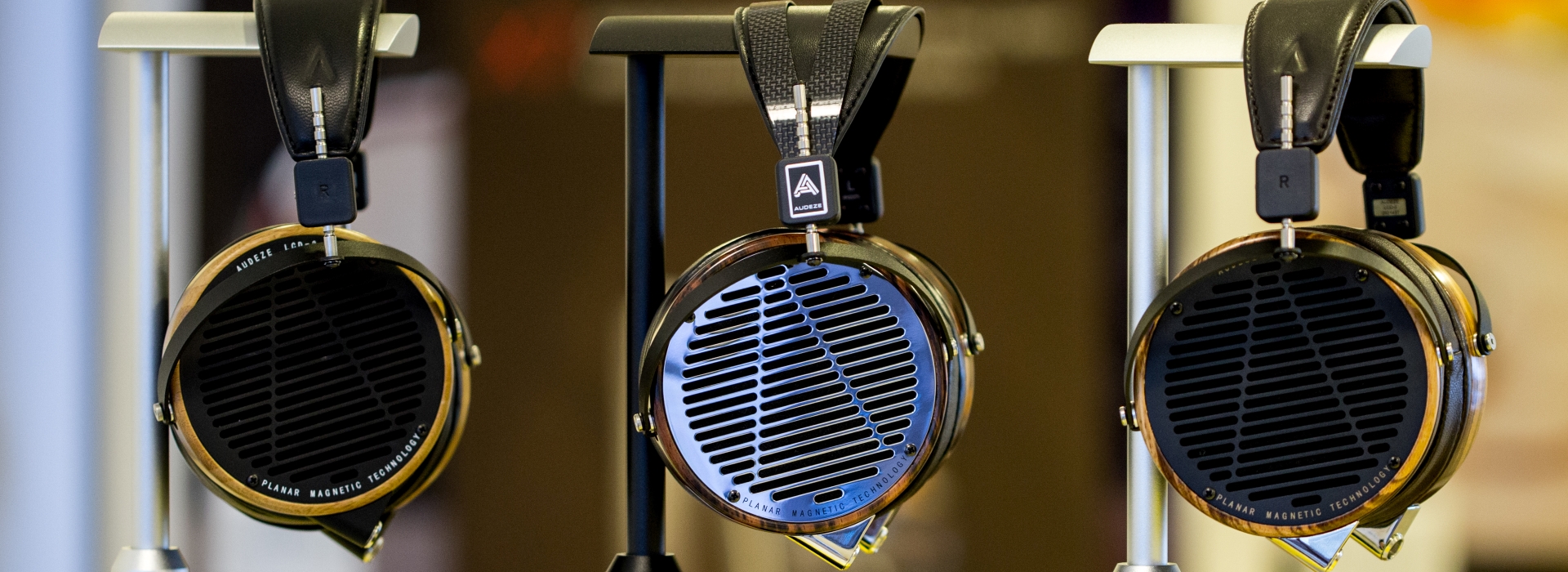
My Video Review:
All my best headphones that I am using right now are planar magnetics and that is not because I don’t like dynamic headphones or that those are weaker in technology, that is not true. I just feel connected to my music a lot more with them. I still didn’t listen to all dynamic headphones or to all planar-magnetics so I am still open-minded. I know a day will come when I will have goose bumps all over my body listening to some dynamic headphones as I am having right now with an LCD-4 from Audeze, that day will surely come, but not yet.
I do appreciate some good measurements; I do appreciate linearity and I do appreciate all the technicalities a transducer can have in a headphone or speaker form. But I care the most if that acoustic membrane will be capable of creating music and emotions,
When I’m listening to headphones, there are very few ones that will make me crank that volume up to eleven until it is making me uncomfortable. LCD-4 is that kind of headphone, it is a dynamics monster and always begs for a higher volume that in return will offer a higher involving factor for the listener. It is not a slow, mellow or plain boring sounding headphone, LCD-4 wants to make you move, it hits that ear drum with an incredible slam and pumps energy directly into your brain. Before I tell you more about their unique skill-set, let’s dive inside the package first.
-16.jpg)
Unboxing Experience
LCD-4 came double boxed obviously. A big surprise came when I opened the card board box and a huge tough case appeared in from of me, it looks incredibly tough, it is also waterproof, dust-proof and looks virtually indestructible to me. Inside the case LCD-4 will sit tightly surrounded by lots of foam around it for extra protection. You will find a certificate of authenticity signed by an Audeze representative, there is a USB flash drive that holds the user guide, warranty information and there is also a pair of white gloves made out of fabric, in case you want to handle them like a true gentleman – now is your chance.
-6.jpg)
Build Quality & Looks
I always liked the looks of the LCD line of headphones. When I first held in my hands an LCD-2 about ten years ago I understood what’s the fuss about. An all metal, wood and leather construction is impressive to touch and to look at, even nowadays the big competition from Asia and Europe can’t offer the same premium materials as Audeze LCD-2 is having at less than a grand.
When I first tested the LCD-4, it was the only headphone in the Audeze line with a much wider leather headband strap that drastically increased the comfort level. The outer headband is lightweight, it’s made out carbon fiber and the overall structure offers a natural weight distribution that is improving the long-term comfort. As for wood cups, Audeze moved from Cocobolo wood to much darker Ebony wood few years ago just because Cocobolo is an endangered wood species right now and is in the IUCN Red List.
There is a big reason why nowadays some of the best pianos, harpsichord keys, violins, violas, guitars, guitar picks, double bass and cello fingerboards are still using this type of wood. It resonates great and will resist a life-time if properly maintained.
If you would like a one of a kind LCD-4 with some other exotic woods, you should contact Audeze directly, as I’ve seen them doing that not only with LCD-4 but with LCD-3 as well. Here’s a gorgeous unit made out of Bubinga wood.
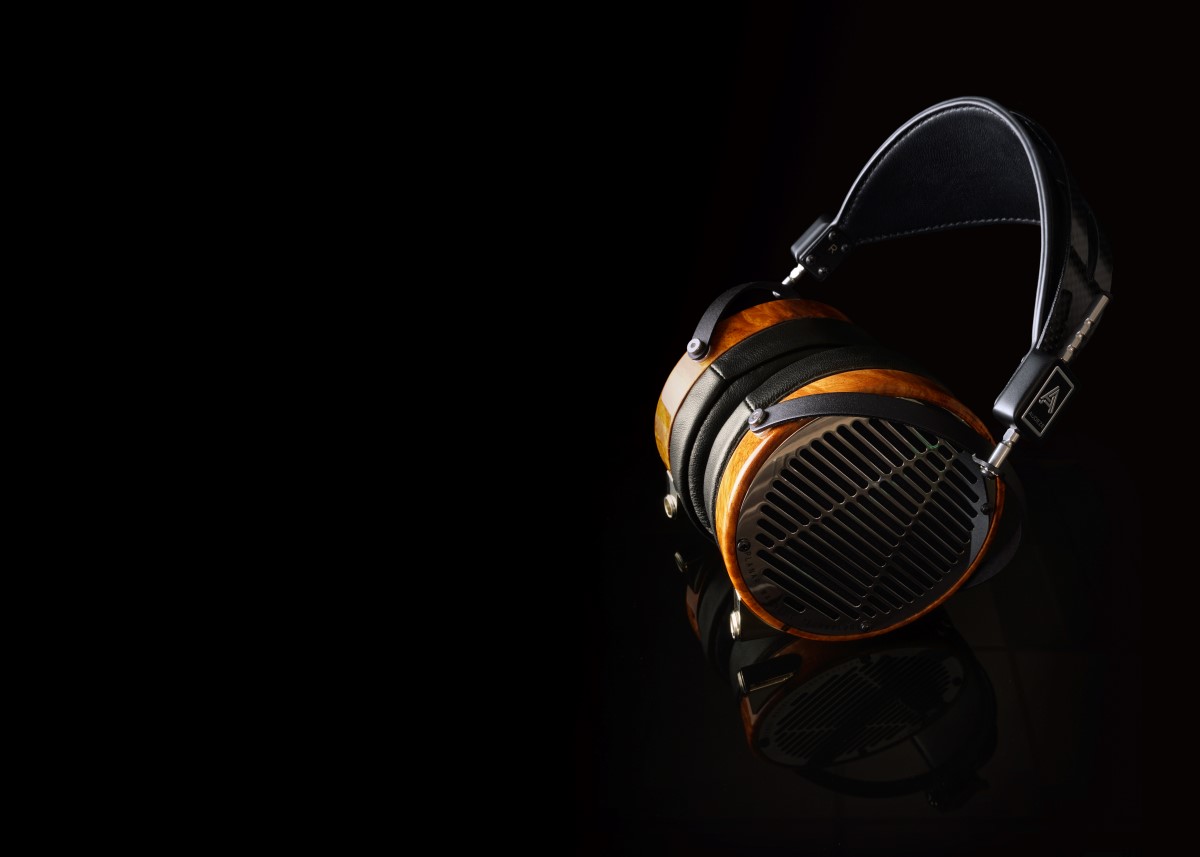
LCD-4 is using the sturdiest headphone connection that I know – locking type mini-XLR connectors and the other end of the cable is terminated with a 6.35mm (1/4”) or with a 4-pin XLR jack. The chromed grills are nice to look at but are a fingerprint magnet in the long run.
The height adjustment mechanism is simple yet super sturdy, I believe Audeze did a small revision on this one as I feel it much tighter now compared to the older LCD-4 that I tested.
As for the cable, this is a very special one and as far as I know only the LCD-4, LCD-4Z and LCD-24 Limited Edition are using this particular cable. It features silver-plated single-crystal Ohno Continuous Cast (OCC) Copper conductors which are cryogenically treated. Audeze even published all its electrical specifications as resistance, capacitance and inductance, it is sold alone for $599 and you can find more about it right here.
The ear pads are made out of leather with lots of memory foam inside for a nice comfort level and if you would like to have a leather-free version, you can have that if you order them directly from Audeze. There is one key aspect about this ear-pad that needs to be said. Since LCD-4 is using the thinnest nano-scale diaphragm that is much lighter than the air mass it moves, it was mandatory putting a small gap between the wooden cup and the ear-pad. Otherwise the air pressure would permanently damage the headphone diaphragm. This is the sole reason LCD-4 ear-pads are not that easy to replace, you will need to contact Audeze support for that.
Having huge drivers, heavy double-sided magnets, big Ebony wood cups, deep and wide leather ear-pads and an all-metal structure made a big impact on its weight. At about 735 grams or 1.62 pounds this is a heavy headphone, but thanks to even distribution of weight and to those fluffy ear-pads, I actually can wear them for 3 hours straight no problem. I already gained serious neck muscle mass with the 690 grams Erzetich Phobos, so LCD-4 feels more or less the same to me.
-7.jpg)
Technology Inside
LCD-4 is not just using the biggest transducer size of 106 mm, but it also uses the thinnest sub 0.5 micron diaphragm, Audeze calls it Nano-Scale Uniforce diaphragm. Because the conductive surface of it is much thinner compared to LCD-2 and LCD-3 for example, LCD-4 will have a much higher resistance of 200 Ohms. This increase in impedance is both good and bad news, on one hand LCD-4 will have a blacker background and will not be prone to noise from the source or amplification so the output impedance of the amplifier will be much less important. On another hand, sensitivity dropped a lot and LCD-4 will need more power to be driven at the same SPL compared to the rest of the LCD line of headphones.
LCD-4 is using huge double-sided magnets in a push-pull configuration, Audeze used them in a special way that achieved a stunning magnetic flux of 1.5 Tesla. You can learn a lot more about Fluxor Magnets right here.
LCD-4 is using Fazor elements located inside the ear-cup (you can feel them with your hands just underneath the ear-pads) that essentially are guiding the audio waves directly into your ear. After LCD-4 was released four years ago, Audeze decided incorporating Fazor elements in all their LCD line of headphones.
-6.jpg)
Sound Performance
I. Understanding LCD-4
If you want to fully appreciate LCD-4, then you will need to understand them first, especially their needs. It so happens that I had them multiple times at my place. I borrowed them from a friend of mine and then from the local distributor and every single time they sounded different with the same songs, how that was even possible? That is because my acoustic chain was always changing, my tastes changed as well and I felt that I never really had a proper system to appreciate them at their fullest. When I had the 16-kilo Audio-GD Master 9 headphone amplifier, I felt that I might get close to their fullest potential but I was not. The folks that will tell you that LCD-4 is slow sounding or doesn’t have great dynamics, or is muddy sounding and doesn’t have enough details, I will tell them back that their acoustic chain was not up to the task and it was not shaking hands with LCD-4. You see, this is a very inefficient headphone, the most inefficient one I have tried, as such it demands a high voltage swing because of the high impedance, but also a high amperage number because of that planar-magnetic driver – that as we all know is mostly current driven. If your amplifier lacks any of that (high voltage and amperage swings) then your listening experience will be flawed, I know this because I have experienced this myself. If you offer them the cleanest possible signal from a detailed sounding DAC and then add a super clean sounding headphone amplifier that has a powerful and robust output stage I mentioned above, then LCD-4 will open up like a flower in from of the listener.
-8.jpg)
II. Power Requirements
According to the microphones inside the MiniDSP EARS, LCD-4 needs an additional 2 dB of volume on the Benchmark HPA4 to reach the same volume as Hifiman Arya. Arya was already the most inefficient headphone I have tested and LCD-4 took the spot as the hardest to drive headphone I ever tested. Erzetich Phobos and Quad ERA-1 can be considered easy tasks compared to the power-hungry LCD-4. If you want to drive the LCD-4 with a portable source, think twice. I could barely hear anything with a Shanling Q1, they sounded much better with the FiiO M11 Pro and almost great out of the FiiO M15 (on the SE output). Out of all portable devices, only M15 impressed me, especially after enabling the “Over-ear headphone mode” I’ve felt an increase in depth, soundstage and a much better diaphragm speed and control. I will be testing the 4.4 mm balanced output on the M15 soon and I’m really curious if LCD-4 can be further improved with a balanced connection from a portable device.
Moving on to desktop power, I tried them out with the Kinki Studio THR-1, with the Audio-GD D-28, with an all tube xDuoo TA-30 and lastly with the super clean sounding Benchmark HPA4. All these devices were capable of sounding great with LCD-4 but the best matching they had was with the HPA4, that solved some of the LCD-4 shortcomings that I will mention in a minute.
System matching is crucial with LCD-4 but it also depends a lot on the everybody’s tastes. LCD-4 is already the best I’ve heard in terms of low-end and midrange so the bass and midrange enhancing THR-1 and D-28 can be too much at times with them. LCD-4 will become low-end beasts with Class-A amplifiers like these ones.
Benchmark HPA4 with its super linear FR, dead neutral approach to music reproduction and close to zero THD, offered the cleanest and the most extended sound in terms of FR. With it, I’ve heard more details out of LCD-4, I’ve heard a tremendous impact, a lightning quick speed and also a crisp and extended treble region. All three headphone amps that I have tested before lacked a bit in the treble area and didn’t offer lighting quick transients and between me and you, this is exactly what LCD-4 needs.
-10.jpg)
III. Sound Signature
Perhaps the most important aspect is how believable they can sound, and how quickly and easily they fade away from your head. I can swear that I am listening to a live performance in which I have absolutely the best place in the room that is perfectly centered.
There are times when an audio component charms you so much that you simply can’t find words to describe your feelings, you just want to listen to music, relax and forget about your everyday needs. LCD-4 are like disappearing from my head, pushing those acoustic waves to do their uninterrupted work and that naturalness they are capable of is just…stunning. They are just intoxicating once you put them on your head.
Taking into consideration my acoustic chain, I find its frequency response absolutely perfect for my tastes. I do like discovering new interesting music, but even more I like rediscovering my music which I am listening for a lifetime. I finally felt the meaning of a high-quality bass that has multiple layers that can move even tiniest amounts of air. The thump LCD-4 is capable of is so amazing on this little amp, even at low listening levels I was impressed by my electronica, not only past 85 dB. The enjoyment factor is the highest I encountered in the headphone kingdom, followed by the Quad ERA-1, by Erzetich Phobos and then by Hifiman Arya.
-3.jpg)
IV. Bass
I do love a fast-executed bass line, I crave for a tremendous slam in the bass but I also love when I can hear multiple layers of it, I like when it’s undistorted even past my comfortable listening level. If we’re talking about bass, then LCD-4 shown me what a real, deep, clean and agile bass really means.
It can feel incomplete with some other headphones, sometimes as a single fat and dirty note. LCD-4 showed me that there are hidden subtleties not only in the midrange or treble, but especially in the bass. With LCD-4, I’ve heard the deepest, the fastest, the most life-like and breathing type of bass. I jumped over my older rave, drum & bass and all sorts of electronica because I was really curious if I would hear some additional bass layers that weren’t present with my other headphones.
Firing The Chrystal Method, Junkie XL, Fatboy Slim, Chemical Brothers and obviously The Prodigy, made me feel like a kid again when I first tried those bands on my Walkman aeons ago. I recognized that pulsating bass but this time I felt it much clearer, slamming even harder and revealing an additional layer that was unheard of on my other headphones.
I heard an earthquake like bass response, I just couldn’t stop from headbanging, that precise bass response was tempting me raising that volume up. I knew it could damage my hearing, but what the hell, it was worth it! I was saying to myself: just 5 minutes more and that’s enough and I would still add another album to the playlist and lean back.
That Low end is warm, seductive and meaty, it’s so enjoyable and fun that I just cannot get enough of it.
-16.jpg)
V. Midrange
Listening to Bohemian Rhapsody by Queen in 24 bit/192 kHz I understood that I’m hearing a sweet, believable and full-bodied midrange that carries lots of emotions. Yes, it is slightly sweeter and creamier, but so delicious and tasty! That thump at 1:20, the heavy piano notes and the soul-grabbing voice of Freddie are just flipping my switch in an instant. When everything explodes at 4:07 mark I felt an instant rush of adrenaline, dynamics just grabbed me and pounded my eardrums, I felt a massive spike of energy and emotion.
Do you still remember those first two drum kicks at the 0:51 mark on Hotel California by Eagles (24 bit/192 kHz – 2013 Remaster)? Those kicks can be considered as benchmarks in terms of slam and impact even by today’s standards. I’ve heard the most detailed and impactful drum kicks so far, as if I am hearing those for the first time, they were simply invalid up until this point.
When it comes to vocals, this is an easy one. LCD-4 offered the most life-like vocal performance I had the pleasure of hearing from the headphone kingdom. All those voices sounded scary real, carried lots of air, sounded smooth and heavyweight. A complete 180-degree turn compared to the likes of Sennheiser HD800 or Beyerdynamic T1.
-23.jpg)
VI. Treble
In terms of treble, first of all LCD-4 offers the most extended treble response from the LCD line of headphones, so if you want an Audeze headphone with the most extended treble, then LCD-4 it is. I hear it detailed, very transparent, I can almost touch those drums. As I much as stressed them, LCD-4 offered a life-like and a non-aggressive treble response. You feel it reaching high octaves, but it is never bothersome, even finishing a rock album I still crave for more drums and cymbals. There is a gentle slope somewhere at the lower treble that puts everything else in the spotlight. That is the main reason, LCD-4 is full-bodied and meatier sounding all the time.
I took a listen to Antonio Vivaldi, a bit of Beethoven and some of Wagner, almost all of them in Hi-Res PCM. Not only that this extraordinary music has a legendary status but it is also very well recorded. With this particular music, LCD-4 sounded resolving, clear and airy, with some bite and sparkle up top but without a disturbing digitus or grain that could ruin my listening pleasure.
I especially enjoyed Moonlight Sonata (3rd Movement – Presto Agitato) with its faster tempo and heavier piano tone. I almost felt like listening to some angry speed metal with that lightning fast approach that carried a livelier, bolder and heavier tone with every single note.
-30.jpg)
VII. Transient Response
I was super impressed by Quad Era-1 and Erzetich Phobos when properly driven out of a powerful headphone amplifier, their transient response always raised my mood levels. When I would have a bad day, I would just listen to those two, toe tap a bit, noddle my head with some engaging music and would come back out of my office with a brighter face. LCD-4 trounces those two and is doing all that on a higher level. Out of 4 headphone amplifiers, LCD-4 sounded quite different and can be a chameleon in terms of speed an impact. LCD-4 was a gentle giant with an all tube amplifier like xDuoo TA-30, it was smooth all the time, offered a rounded performance that put me into a relaxed state of mind. With Kinki THR-1 and Audio-GD D-28, pace is improving, dynamics are hitting me harder, I finally woke up from my relaxed state, transient response improved quite a lot. The moment I connected them to the Benchmark HPA4 on the 4-pin balanced output, I felt again a massive spike in terms of speed, it sounded as the fastest headphone I had the pleasure of testing.
They transformed into some huge slam monsters, carrying a tremendous impact with every note and sounded lighting quick with faster electronica. I believe that LCD-4 has the fastest decay with the right setup and will impress anyone seeking slam and impact. I will be measuring them shortly and I am really curious how their spectral decay would be rendered.
-31.jpg)
VIII. Soundstage & Depth
Switching from LCD-2, LCD-3 and then listening to LCD-4 it feels like there is just more air in the room, I feel them pushing more air much farther away from the listener. When properly driven with a true dual-mono amplifier that has a close to zero cross-talk between the channels, the left to right soundstage is widening substantially. LCD-4 is impressive from Left to Right as the void space between the notes is increasing and I will have an easier time discerning where everything is located around me. Those notes are almost not touching each other, when experiencing that for the first time it feels weird but pleasant nonetheless. LCD-4 is not having a super wide and fake soundstage as HD800 by Sennheiser has. With HD800 everything is super wide sounding, even my cozy jazz recorded in a 2 by 2-meter room sounds like being at a live concert, I don’t want that. I want the stage to be open and wide only with the right music and recording and I believe that LCD-4 is doing exactly this and so much better than my other planar-magnetic headphones.
-23.jpg)
IX. Detail Retrieval
LCD-4 will be showing everything there is to hear, even the tiniest air movements, micro-details are plenty and can’t hide away. It does that naturally and is not forcing the listener. It is a detailed but non-aggressive type of sound. LCD-4 again played like a chameleon in this department, if you want to hide some imperfections of the recording then an all-tube amplifier will help, even some class-A amps will do that. But you want to dissect and to hear every detail, every shape and texture then you should really try a headphone amplifier with THX AAA technology. With Benchmark HPA4, LCD-4 is showing an additional layer of information compared to other headphone amps and will probably extract the best LCD-4 is capable of in terms of details and transparency.
-5.jpg)
X. Measurements
After giving my full subjective opinion, it is time putting them under a magnifying glass. I am curious mostly about their FR, THD, but also about its decay and waterfall. When it comes to measurements, I trust a single headphone amp to do this job: the ultra-linear Benchmark HPA4. The source was my trusty Matrix Audio Element X and the measurement rig was the MiniDSP E.A.R.S. system.
I used mostly Original Headphone Compensation (HPN) files for this particular EARS serial number, because I feel that Compensation For Flat EQ (HEQ) files are not very representative. EARS system has some big silicon ears but that wasn’t a problem for those huge earpads of LCD-4. Since it is a fully open-back headphone I tested them in a sealed room and I redid all my tests more than 10 times.
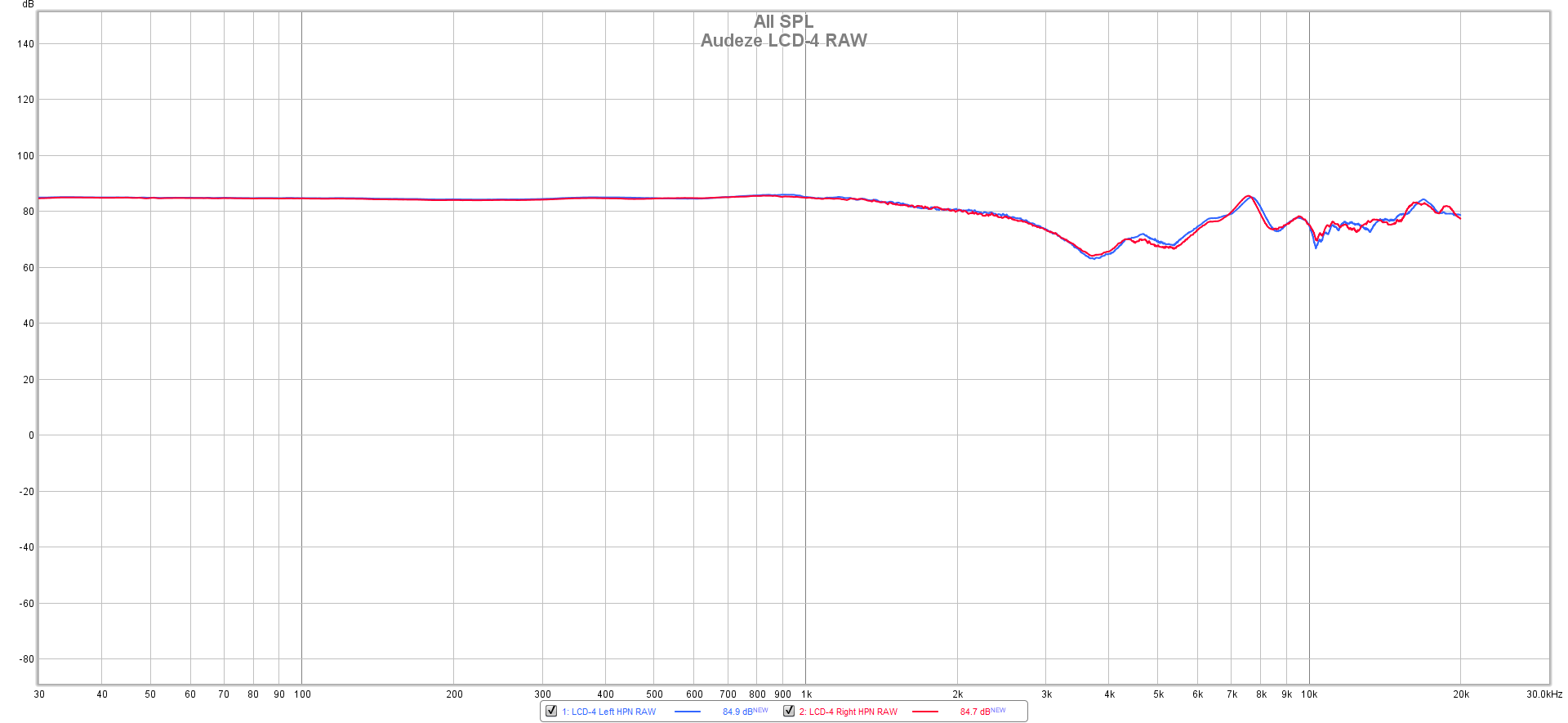
I am genuinely impressed by the driver matching, just look at this RAW measurement. There is just a small deviation, almost unbelievable how close both drivers are matched. I don’t have a cherry-picked unit right here and I am glad to report that out of all headphones that I measured, LCD-4 has the best driver matching. Did you see those L to R channel deviation on Phobos or on Arya? Now compare those to LCD-4. Oranges vs Apples really.
In terms of Frequency Response (FR for short) just look at that beautiful clean and straight line from 20 Hz to 2 kHz. As you can see, LCD-4 is absolutely impressive in terms of bass and midrange and it is as good as it can get in that region.
There is a smooth and gentle slope in the lower treble that makes the sound full-bodied and heavy weight. Overall the brightness is tamed and LCD-4 offers an extended treble response with just few gaps that are mostly targeting brightness. There is deviation from my 84 dB target curve but it is not a huge one and I am actually quite happy with those gentle roll-offs in the 4 kHz and then at 11 kHz. For fun I even measured them past our hearing capabilities, EARS can measure up to 24 kHz and sure enough LCD-4 was having an excellent treble extension even past top-octave and past sub-sonic treble area. If I could measure them past 24 kHz, I’m sure there would be some driver movement too. Just impressive!
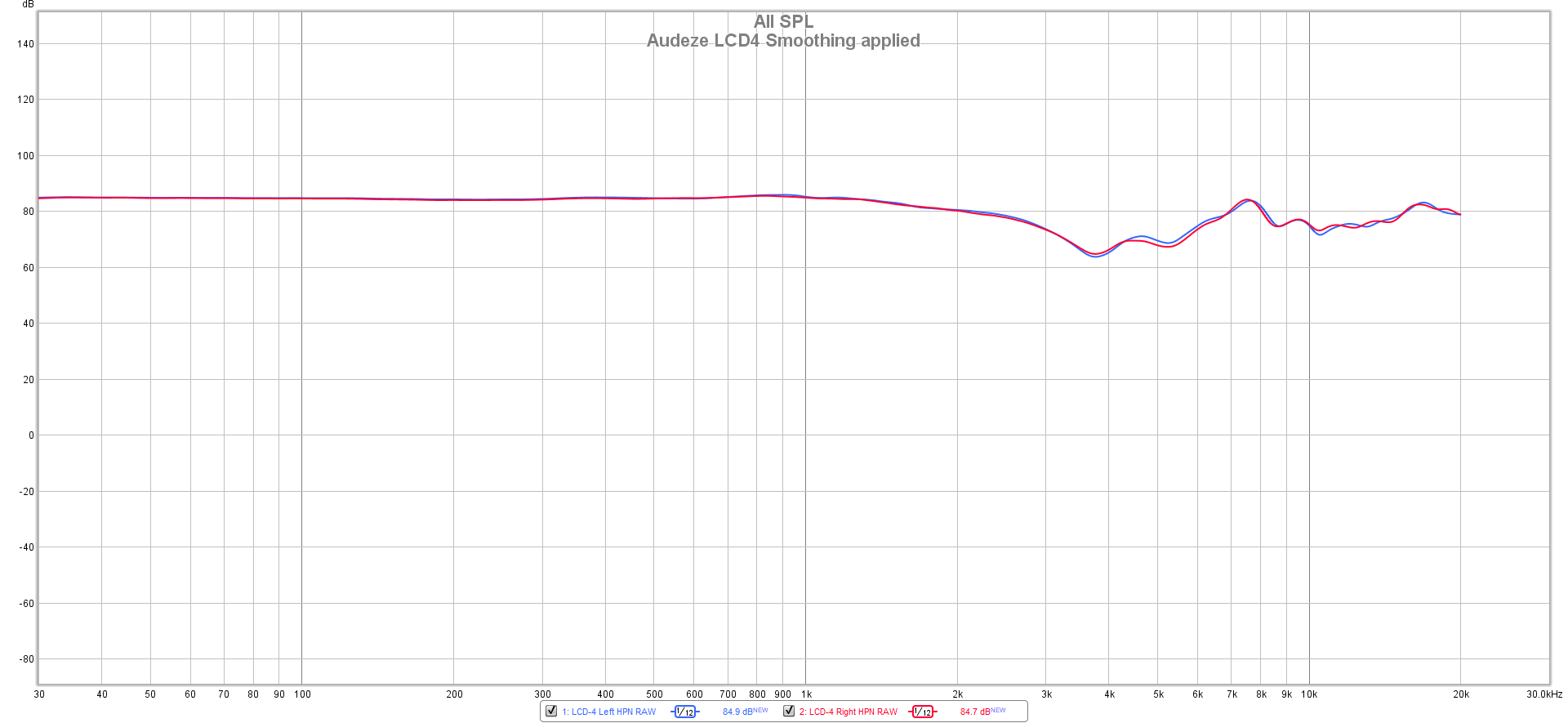
Applying a 1/12 smoothness didn’t change a lot, since the drivers are closely matched by less than 1 db deviation that I consider an impeccable performance.
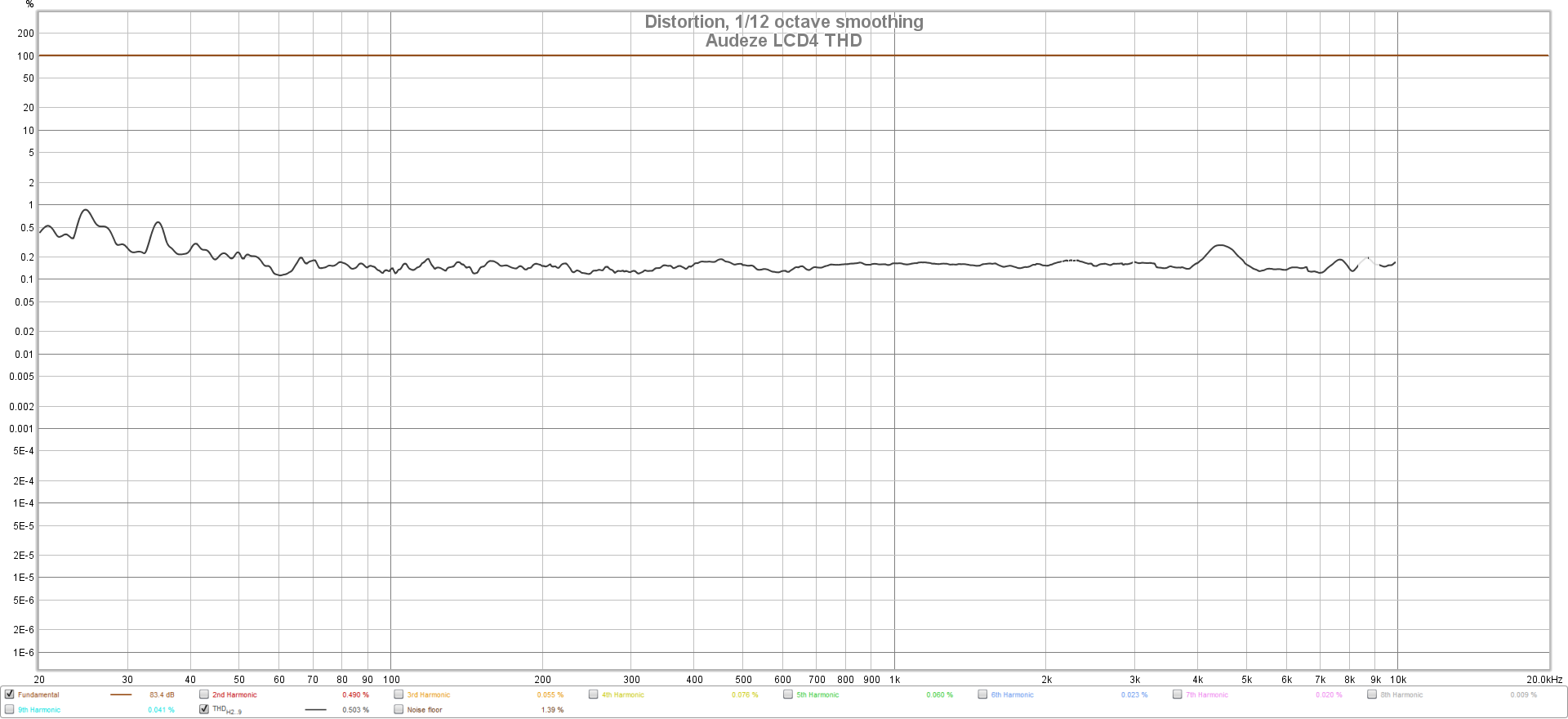
Another impressive measurement is the Total Harmonic Distortion (THD) and so far, this is the lowest recorded THD I’ve seen. Sub-bass never touches 1% and the rest stays between 0.2 and 0.1%! Phobos, Arya and ERA-1 have a higher THD and a much higher one in the treble region by comparison.
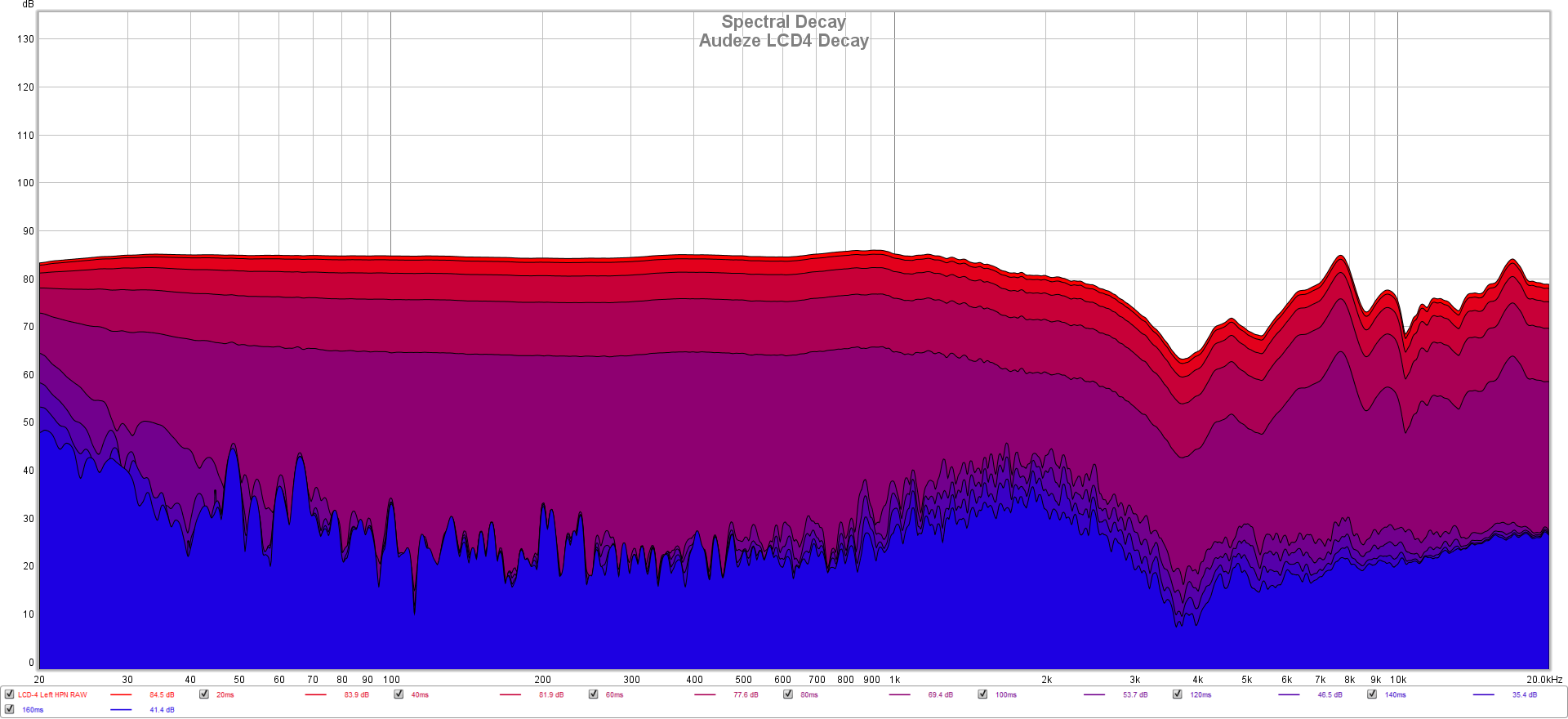
Another statement measurement is the spectral decay. As I’ve heard and imagined, LCD-4 is simply faster sounding that any other headphone I tried at my place. LCD-4 moves faster than my other planars and my subjective opinions are mirroring my measurements.

Spectrogram and waterfall readings are better showing that slope in the treble, you can clearly see the driver movement in the waterfall reading. That double sided magnet structure and huge magnetic flux surely helped a lot in controlling that sub-micron thick diaphragm.

I don’t consider the drops in the treble to be significant or bothersome, I’m actually enjoying this type of relaxed approach to low and mid-treble presentation and for a longer listening sessions LCD-4 are just marvelous.
Overall, with LCD-4 I just recorded the lowest THD, the best driver matching, the best spectral decay and an super extended FR even past 24 kHz! So far, LCD-4 has the best measurements I recorded in my small lab and I was quite stunned that their THD is much lower than that of the Hifiman JADE II Electrostatic headphone system, I’m more than impressed!

XI. A Comparison
Audeze LCD-4 (4000 USD) VS Erzetich Phobos (2300 USD)
From all headphones that I have at my disposal, only Erzetich Phobos can stand a chance versus the Audeze LCD-4, because it has a wider frequency response and has the same driver size of 106mm.
Both headphones have an all metal structure, wooden cups, Phobos has them even a little bigger. Both use hard woods, Linden in case of Phobos and Ebony in case of LCD-4. Erzetich is using only leather-free materials so Phobos ear-pads and headband strap are made out of faux-leather, with LCD-4 you can choose to have leather-free or real leather ear-pads. In the looks department, those chromed grills and the carbon fiber headband are adding the last touch of finesse, LCD-4 is looking really sexy, modern and it is very beautiful to look at. Phobos is raw looking by comparison, with rough edges, small cracks in the wood, it is more steampunk/industrial looking for sure. Both are really heavy, there is a very small difference in terms of weight and the comfort level is mostly the same on both. Phobos is almost half the price and when listening to both I can understand why.
To make a proper comparison, it was mandatory volume matching both of them. For that I used the miniDSP EARS and a 300 Hz sine wave to volume match them at my listening level of 85 dB. LCD-4 needs an additional of 16 dB compared to Phobos to reach the same SPL, so quite a big difference between the two when it comes to headphone sensitivity and power requirements.
In terms of sound, Phobos is engaging and open wide sounding most of the time, it has a really good pin-point imaging and it is extra special in the treble region. LCD-4 sounded even more engaging, faster, it slammed me harder, had a much better sub-bass performance and sounded more linear in the mid-bass and midrange area. LCD-4 sounded deeper and wider on all axes, it impressed me with its airier presentation and offered more spatial cues around me. Up to 2 kHz, LCD-4 was offering more of everything, it is so far the bass and midrange king. Phobos on the other hand puts a bigger spotlight in the treble region where some notes are better defined and have a sharper outline. This comes as a double-edged sword, because extra care is needed when matching Phobos with upstream equipment. LCD-4 is a bit warmer sounding by comparison, it is more enveloping, it engages you more with your music and is completely free of any digital glare.
When it comes to details, transparency, soundstage and transient response, LCD-4 is better on all of them. It will reveal an additional layer of information, especially in the midrange and bass, will sound bigger, wider, even faster and more impactful.
In the end, LCD-4 is built from higher quality materials, feels more premium and is more beautiful to look at. Sound wise, it is better on all key aspects except for treble where it has a gentle roll-off.
-2.jpg)
Conclusion
This is the hardest headphone review I wrote to date. I wrote my preliminary notes somewhere in 2017 when I had them for a longer period, then in 2018 I borrowed them again and added more pages into this review, then I borrowed them again this year, I measured them, added even more pages and finally I could publish my final review for Audeze LCD-4.
As a headphone enthusiast, I’m always on the hunt for the next best thing. I do appreciate affordable Hi-Fi and I do use affordable portable and desktop headphones on a daily basis. However, when I’m alone in my office and I know that this is my time to relax and be myself, that is the moment I would choose to listen to some high-end headphones that will teleport me into my world where I can be that angry metal singer, a wild uncontrollable drummer, a 7-string guitar player or a conductor for the orchestra in front of me. If there is a headphone that makes me feel good, feel sad, that can make me cry, or be joyful and happy then that is the perfect headphone for me. If you wound know me personally, you would still not understand how high I am putting the emotion side of music listening, it is almost like a religion to me. With LCD-4 I refuse to analyze my music, I just want to listen to it, feel it and be part of it. If this was the main mission of the team behind it, then mission is complete!
PROS:
- Best looking headphones I’ve seen to date, using only high-quality materials
- Good weight distribution and comfort level considering their weight
- The deepest and the widest sounding planar-magnetic headphones I’ve tested
- Accurate pin-point imaging, incredible see-through transparency
- Airy sounding thanks to huge open-back earcups
- Excellent detail retrieval
- Greatest slam and impact (with the right amplification), simply a transient response monster carrying explosive dynamics
- Deepest bass and most life like midrange I’ve heard in a headphone
- Widest frequency response, there is information even past 24 kHz
- Love the hard carry case
CONS:
- Hard to drive
- Pricey
ASSOCIATED EQUIPMENT:
- DACs: Matrix Audio Element X, KECES S3, Audio-GD D-28, Burson Conductor 3 Reference
- DAPs: FiiO M15, M11 PRO, Shanling Q1
- Headphone amps: Benchmark HPA4, Kinki Studio THR-1, Audio-GD D-28, xDuoo TA-30
- Full-sized headphones: Audeze LCD-4, Erzetich Phobos, Hifiman Arya, Quad ERA-1
- Portable headphones: Sennheiser Momentum 2, Meze 99 Classics
- IEMs: FiiO FH7, Simgot EN700 PRO, Moondrop Starfield
- Loudspeakers: KEF LS50W
- Interconnects: QED Reference XLR, Aune AL3 XLR
- Power Cables: Isotek EVO3 Premier (x2)
- Balanced Power Conditioners: PLiXiR Elite BAC 400, KECES BP-600
-14.jpg)

